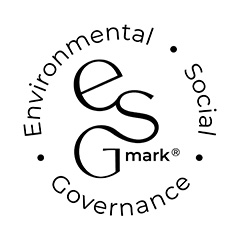In this series of blogs, I will aim to provide greater clarity around some key areas where differences in the expectations of auditors and businesses commonly arise.
Introduction
Whilst I am writing these blogs, my mind is constantly drawn back to the start of my accountancy studies, specifically to the concept of the ‘Expectations Gap’ and so much so that it is on this that I have based the name of this series of blogs. I think that it is fair to say that while professional accountants understand the expectations gap, most would agree that more could and should be done to help our clients, Directors of businesses and others who rely on accounts to help them understand exactly what this is as much as feasibly possible.
In this series of blogs, I will aim to provide greater clarity around some key areas where differences in the expectations of auditors and businesses commonly arise, with a hope that this will help address some common issues prior to them arising and hopefully lead to some potentially significant questions which can form a starting point for further conversations.
Part 3: One size doesn't fit all
An audit is generally seen as the gold standard of assurance and I believe this is rightly so. Many businesses, however, are not legally required to have and audit either due to them not being governed by the companies or other act, or they fall under the small company limits and are entitled to an exemption.
Often businesses who are exempt from audit either prepare their own accounts or employ and accountant to provide a report confirming they have been prepared by a qualified accountant. It is therefore important for Directors of both businesses exempt from and subject to audit to understand what other assurance options are available and when these may be useful to the business. After all, there could be a significant saving in fees!
Option 1: Assurance reports
An assurance report is generally seen as the next step up from an accountants report. In this report the accountant will express an opinion on the accounts, where as an accountants report only states that they were prepared by a qualified accountant. This can be useful to businesses that are in a situation where a set of accounts is not required to have a statutory audit and the cost and time involved in a voluntary audit outweighs the benefit, but management still want to show that an independent third party has reviewed the figures.
An assurance report will cover a review of material balances and any specific risks, unusual transactions or variances identified, however will not be as extensive as an audit and will not specifically cover the businesses systems. This report is therefore useful in confirming the accuracy of a set of figures, but will not provide any significant assurance that the systems the business operates are free from weaknesses or if there is a lack of controls. The key difference in the reports is that the assurance report effectively states ‘nothing has come to our attention that would indicate a material error existing’, which is similar but notably different to an audit report which effectively states ‘we believe the figures are not materially misstated’ among other things.
Option 2: Agreed upon procedures
These are heavily tailored reports that have a very specific scope, agreed at the outset and usually focussing on either a single area or business system. This is the most flexible assurance procedure and it can therefore be tailored to cover a number of different areas that are of interest to management. This ability to ‘pick and mix’ what is covered makes it an appealing option to both audited and unaudited businesses, providing them assurance on areas where management want the help of a third party to mitigate risk or for recommendations where systems are not being reviewed by other types of assurance. Due to the targeted nature of these reports they are the most cost effective option and generally have the least impact on businesses resources and managements time. However, it is worth remembering that a report would not be filed with a set of accounts on the public record.
In summary
There are a number of assurance options available to businesses other than the full statutory audit, which can be employed by Directors to help address risks they have identified and where the input from an independent third party is desired. Every business is of course different and it may be that a one-off report is the answer, or instead a regular annual report or a variation of these which could change year-to-year. The most important thing regarding this is for management to be aware of the options available to them, and to discuss their needs with a professional accountant or auditor so that they can help identify an assurance solution which satisfies the business’s needs.
If you have any questions concerning the above, or anything relating to auditing, please get in touch with your usual Rickard Luckin contact or speak to Shaun Labbett directly at shaun.labbett@rickardluckin.co.uk
Parts in this series
- Part 1: “I thought you were doing that” – A consideration of the responsibilities of both parties and importance of communication.
- Part 2: The Limitations of Statutory Audits – Highlighting the limitations of statutory audits and some areas that may not be covered by them.
- Part 3: One Size Doesn’t Fit All – A look at alternatives to statutory audit and when they may be of use to both businesses subject and not subject to audit.
Still to come
- Part 4: A Risky Business – A review of the importance of identifying and mitigating business risks and how these can link with audit risks.
- Part 5: Materiality – An explanation of the principal of materiality, how this is calculated and why it may differ from management’s expectation.
- Part 6: Watchdogs or Bloodhounds – A discussion on the role auditors play in identifying criminal activity, fraud and deliberate errors.
If you have any questions about the above, or would like more information specific to your circumstances, please enter your email address below and we will get in touch:













